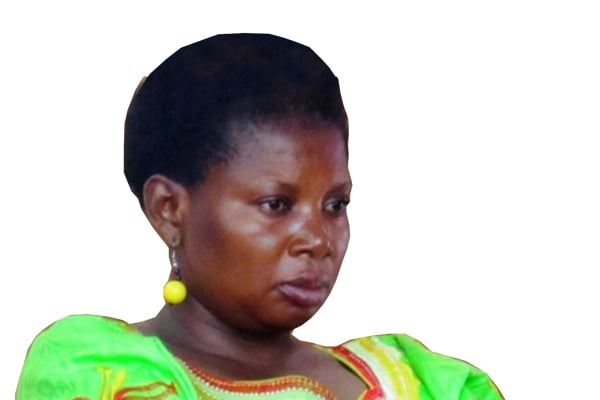Prime
Three bedroom contemporary residence

Another unique feature of this house is the gypsum ceiling, which has gained popularity in Uganda in the last decade according to Ronald Arinaitwe, a structural engineer. Courtesy photo
What you need to know:
- As the board moves down a conveyer line, the calcium sulfate recrystallizes or rehydrates, chemically combining with the water that was removed during calcination and reverts to its original rock state. The paper becomes chemically and mechanically bonded to the core. The board is then cut to length and conveyed through dryers to remove any free moisture.
This is a bold house plan that has the capacity to distinguish your house from the other residences around. Simon Peter Kazibwe, the architect who designed this plan, says the aim was to create a house that is modern, timeless yet blends in perfectly with its surroundings.
“There are some instances where architects create a wonderfully unique design that unfortunately either looks out of place in its surrounding or goes out of style in a few years making it look out-of-date,” Kazibwe observes.
For this ambitious project, Kazibwe chose a combination of natural materials such as wood and stone for the exterior, tiles and a gypsum ceiling for the interior.
The house has two entrances; the front one opens into the living room while the back one opens into the kitchen. The kitchen, dining room and breakfast nook are located at the back of the house. The house has two self-contained bedrooms and a master suite complete with sitting area, ensuite bathroom and dressing room.
This house’s unique feature is a modernist pavilion at the front entrance. Its location, design and eclectic mix of materials (wood and stone details) make it visually distinct giving the residence a contemporary yet timeless look. The warm earthy finish of the house makes it blend in with its environment.
In compliance with the contemporary architectural design, the house relies heavily on natural light. It features large floor to ceiling panorama windows not only allow nature to be a background for the interior design but let in an abundance of natural light. To complement the design, Hannington Wasswa, an interior designer, recommends the use of natural materials such as wood, leather, cotton, natural linen, slate and stone as decorative accents.
He further recommends the use of subtle colours often referred to as “neutral”, which include gray, brown, blacks and white. The flooring and furnishings should also be in subtle colours and complemented by the metal shine of stainless steel. This house plan is designed to fit perfectly on a 50X100 plot and is estimated to cost Shs75-80m.
Another unique feature of this house is the gypsum ceiling, which has gained popularity in Uganda in the last decade according to Ronald Arinaitwe, a structural engineer. “Gypsum ceilings are one of most popular false ceilings these days. They make the room look stylish and spacious if designed well. They are durable, less tedious to install, help with sound insulation and are fire resistant,” Arinaitwe explains.
Source: https://www.gypsum.org
What is gypsum?
Gypsum board is often called drywall, wallboard, or plasterboard. It differs from other panel-type building products, such as plywood, hardboard, and fiberboard, because of its noncombustible core and paper facers. When joints and fastener heads are covered with a joint compound system, gypsum wall board creates a continuous surface suitable for most types of interior decoration. Gypsum is a mineral found in sedimentary rock formations in a crystalline form known as calcium sulfate dihydrate CaSO4•2H2O.
Gypsum rock is mined or quarried and transported to the manufacturing facility. To produce gypsum board, the calcined gypsum is mixed with water and additives to form a slurry which is fed between continuous layers of paper on a board machine. As the board moves down a conveyer line, the calcium sulfate recrystallizes or rehydrates, chemically combining with the water that was removed during calcination and reverts to its original rock state. The paper becomes chemically and mechanically bonded to the core. The board is then cut to length and conveyed through dryers to remove any free moisture.
Source: https://www.homestratosphere.com




